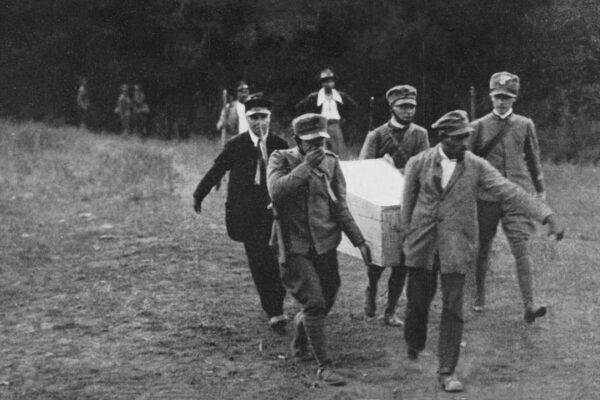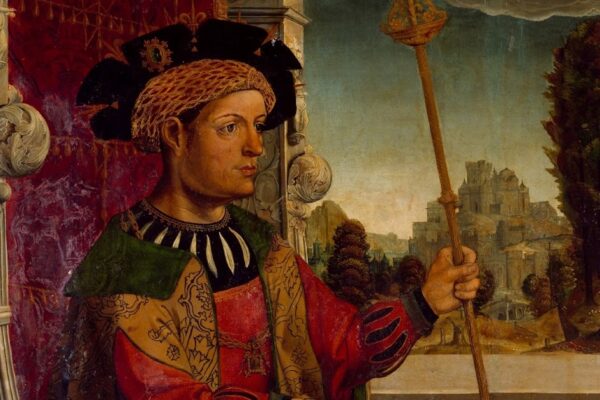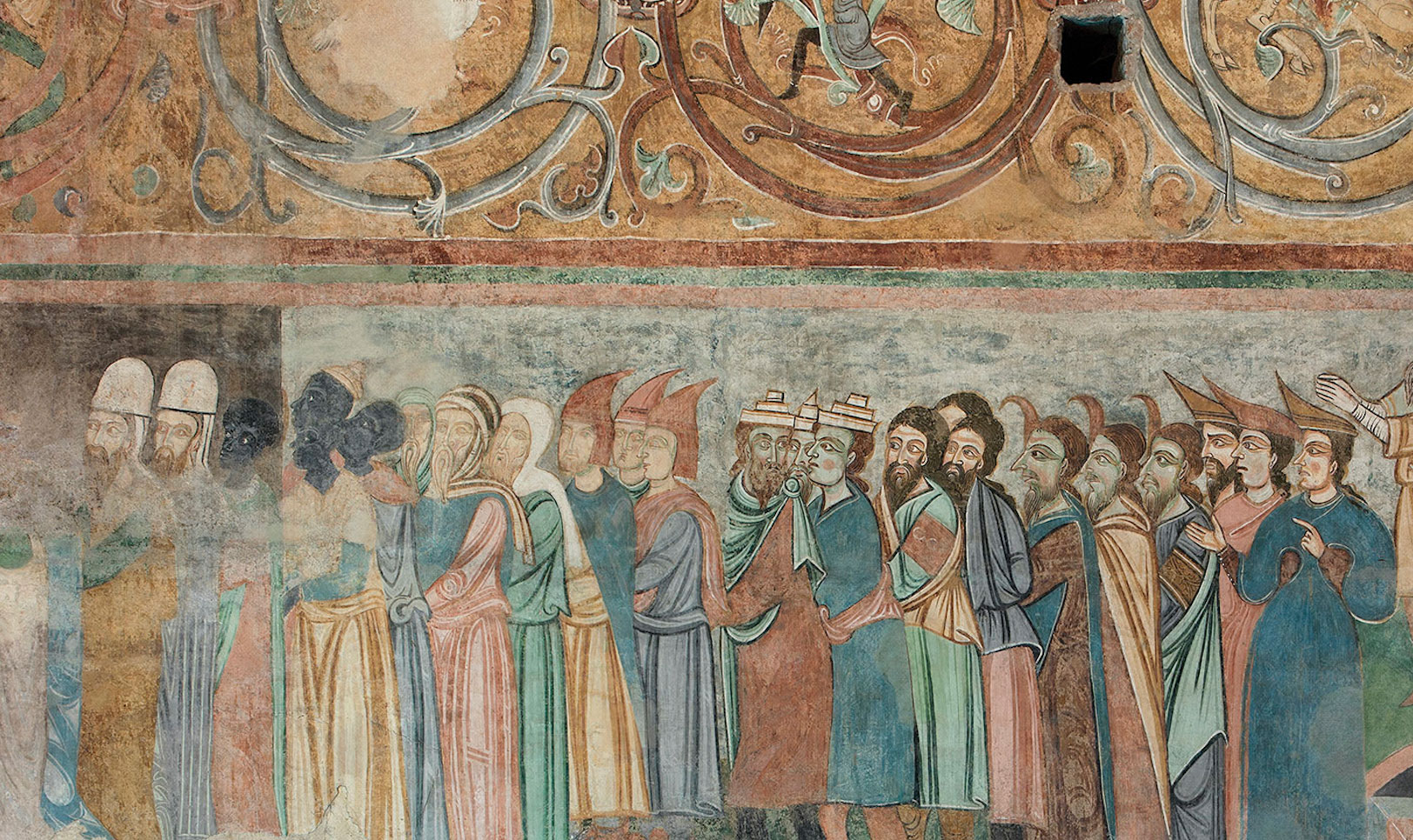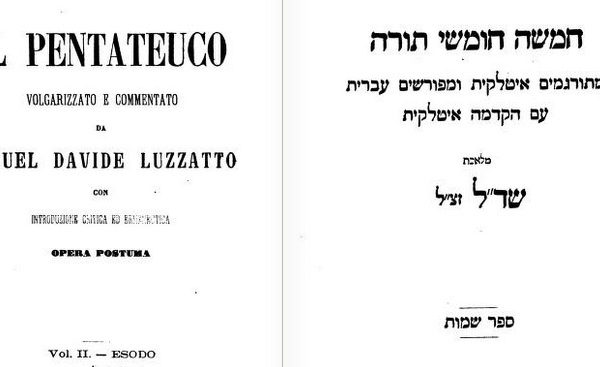It sounds like something from a cheap historical novel: In the spring of 1321, in Easter Week, rumour is rife in the south of France that a conspiracy is on foot to kill all Christians and that wells have been poisoned all over the country. The rumour soon spreads throughout the whole of France and, in time, across its borders to what are now Switzerland and Spain. In some of the chronicles that have come down to us, the plot is said to be the work of lepers.
Elsewhere, the poisoning of wells was ascribed to Jews working together with the lepers. In some places blame was laid at the door of Muslim rulers in Granada or Tunis, or of the Sultan of Babylon, who were said to have paid Jews and lepers to kill Christians. The rumours resulted in persecutions and massacres all over France, and before long they were being substantiated by confessions and other evidence. Long and detailed explanations appeared to show how the poison had been introduced into the wells. The conspirators’ accomplices were denounced, and contemporary letters and documents tell of the Jews’ association with the Saracens and of plans for setting up a government composed of Jews, lepers, and Muslims to take over Europe in the aftermath of the calamity.
As a consequence of these happenings in the spring of 1321, all over France lepers were interned. The object was to sever the connection between the infected and society at large, and to prevent them from having children. This is the first recorded instance in European history of such large-scale isolation measures, and it was to provide the pattern for similar measures for centuries to come. For the Jews, the events of 1321 resulted in pogroms and death at the stake, confiscation of property, exclusion from trade and other commercial activities, and, in 1323, the issuance of a royal edict providing for their expulsion from the realm of France. As early as the summer of 1321, the King had officially confirmed that the accusations levelled at Jews and lepers were well-founded and should be taken seriously.
The belief in a Witches’ Sabbath
This story opens the Italian historian Carlo Ginzburg’s book Storia notturna: Una decifrazione del Sabba (1989), which was recently published in English under the title Ecstasies: Deciphering the Witches’ Sabbath . Ginzburg retraces the course of events in 1321 in minute detail, describing how rumour spread from village to village and town to town, and how the charges became increasingly substantiated. In the author’s opinion, the conspiracy theories that took root in these months constitute one of the principal prerequisites of a phenomenon which, in the centuries that followed, was destined to leave a lasting mark on European history: the belief in a Witches’ Sabbath.
Ginzburg’s account of these happenings gives us some idea of what has made him one of today’s foremost historians: his talents as a storyteller, his interest in popular beliefs and their relationship to power and authority, and his gift for winkling out the small details capable of challenging our established views of history. All this coupled with an ability to detect the large in the small, to combine an understanding of the abstract driving forces in history with the analysis of seemingly chance and insignificant incidents.
The great conspiracy
Carlo Ginzburg: What we witness in the spring of 1321 is the idea of the great conspiracy, the notion that external enemies can ally themselves with persons in our midst in order to undermine the entire social structure. This idea had an overwhelming impact in the period under review. In 1348, for example, Jews all over southern France were massacred after being accused of spreading the Black Death. Early in the fifteenth century, this conspiracy model re-emerged, though in a different guise. This time it was the practitioners of the Black Arts who were supposed to be behind the veiled attack on Christianity. They were no longer in league with the Muslims, but with the Devil. Conspiracy had thus become omnipresent. It could no longer be linked to a specific section of the population; and it was no longer rooted in human conflicts, but on the contrary in the absolute struggle between God and the Devil. With this, a mainstay of the belief in the existence of a Witches’ Sabbath was firmly in place. The effects of that belief were to make themselves felt throughout the whole of Europe for more than two centuries afterwards.
Trygve Riiser Gunderson: Even so, you think that the events of 1321 were unique?
CG: The rumours spread so rapidly and systematically that spring that it could not possibly have been by chance. Some central authority must have taken steps to spread the charges. The idea of a conspiracy was thus in itself a conspiracy. From the sources available to us it is reasonable to conclude that it was persons at the centre of power in France who were behind it all. The accusations may, of course, have originated at a local level, but their dissemination was encouraged and directed from a central source. That distinguishes the unrest of 1321 from the events of 1348 and those around 1400, which were more spontaneous in nature.
In the years prior to 1321, there was a strong desire in political circles both to destroy the Jews’ economic position and to assume control of the considerable sums then accruing to charitable organizations set up to help lepers. Shortly afterwards both these aims were fulfilled.
The appearance of such a large-scale, coordinated campaign can only be explained by the concurrent rise of the nation-state. The conspiracy appears as a distorted image of the new political system, a kind of grotesque caricature of the nation-state’s new functions - but with that grain of truth in it that is a feature of all caricatures.
But this picture emerges only when the occurrences of 1321 are viewed as a whole and studied chronologically – when the many diverse incidents are pieced together and analyzed day by day, if not hour by hour. Only then does the link between them become clear. I¹m convinced that chronology, pure and simple, is one of the historian’s most powerful weapons. It may be treated with suspicion in modern historiography, but its critical efficacy is greater than many people realize.
TRG: When you talk about the medieval fear of conspiracy, it’s hard not to be reminded of certain aspects of the general mood after the events of 11 September 2001.
CG: I wasn’t thinking along those lines when I wrote that, of course, but yes, today the comparison is striking. It’s one of those things that can happen when you work as an historian - those sudden flashes of contemporaneity. The last couple of years has, at least, clearly demonstrated that the fear of conspiracy still is a powerful force today. It belongs to those central historical ideas that help to determine our view of reality. I see it as part of my challenge as an historian to draw attention to such historical accretions – to dispel the belief that our own lives are separated from the past. In truth, anything that can rid us of our illusion of historical autonomy pleases me. Read the complete article









